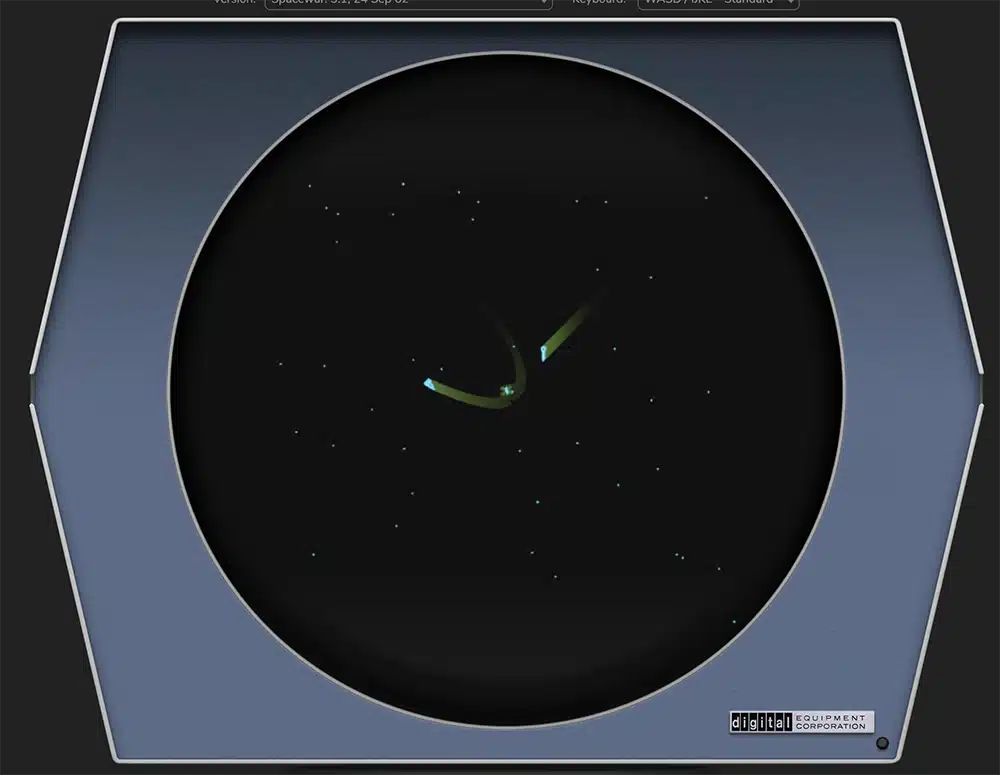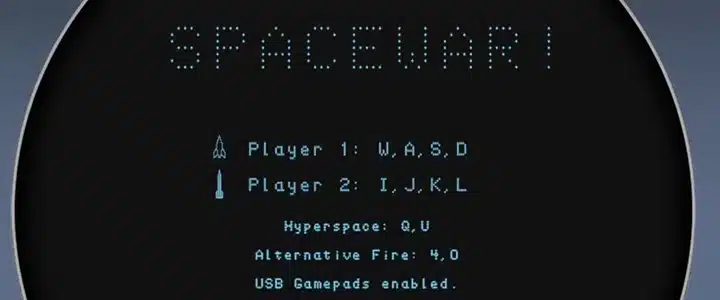Spacewar! is the world’s second video game. Created by MIT students in 1962, it – like Tennis for Two – earned a shrine in Ready Player One.
Quote
The museum’s bottom level, located in the planet core, was a spherical room containing a shrine to the very first videogame, Tennis for Two, invented by William Higinbotham in 1958. The game ran on an ancient analogy computer and was played on a tiny oscilloscope screen about five inches in diamter.
Next to it was a replica of an ancient PDP-1 computer running a copy of Spacewar!, the second videogame ever made, created by a bunch of students at MIT in 1962.
Game Play
Two line-drawn starships face off against each other on a blank battlefield. A star appears in the center of the map, and its gravity threatens to pull in – and destroy – any ship that gets too close. Players flit around the map trying to defeat each other while avoiding the deadly singularity at its center.

Impressions
Truth be told, I thought Spacewar! was just a game cartridge for the Atari 2600, which is how I came across the game as a kid. It turns out that was actually Space War, which was released by Atari in 1982.
I didn’t know about its MIT origin story and larger history until I read Ready Player One. Knowing that history makes the game that much cooler.
The best way to play Spacewar! is via its online emulator, which runs a virtual DEC PDP-1 (the game’s original hardware). The emulator recreates the round, oscilloscope-style viewport of the game, and faithfully depicts the ghostly lines of the ships as they move around the playing field. The emulator lets you use keyboard input or USB gamepads; the latter is better for playing a human opponent. Unlike the Tennis for Two emulator, there is no CPU mode that lets you play against a computer player.
Like its Atari-based descendent, it remains a fun game. You can easily see the game mechanics that would go on to inspire Asteroids and its ilk, complete with basic thrust controls, weapons, and hyperspace.
The Ready Player One Replay is an ongoing exploration of the games that inspired the novel Ready Player One by Ernest Cline. Love it or hate it, there’s value in revisiting our geeky roots.
High Scores
- My High Score: N/A

